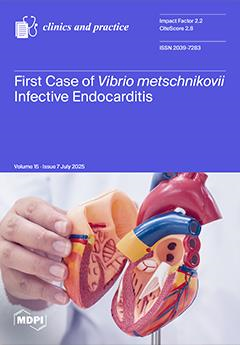Background: Mongolia has a high incidence of hepatocellular carcinoma (HCC), with 85.6 cases per 100,000 population and 70% diagnosed at an advanced stage. HCC accounts for 35% of all cancer-related deaths in the country. The primary treatment for HCC remains hepatotectomy. This study
[...] Read more.
Background: Mongolia has a high incidence of hepatocellular carcinoma (HCC), with 85.6 cases per 100,000 population and 70% diagnosed at an advanced stage. HCC accounts for 35% of all cancer-related deaths in the country. The primary treatment for HCC remains hepatotectomy. This study aims to investigate the factors affecting the prognosis of patients undergoing liver resection for HCC in Mongolia.
Materials and Methods: A retrospective cohort study was conducted using data from the National Cancer Centre’s eHealth program and cancer registry. The study enrolled 1100 patients who underwent liver resection from 2015 to 2018, with a follow-up period of 5.25–9.25 years to determine survival rates.
Results: The study included 980 patients, with a male-to-female ratio of 1.2:1 and an average age of 60 years. Tumour stage II patients had the highest survival rate (46.55%), and those with stage IIIb had the lowest (1.51%) (
p = 0.0001). Smaller tumours (≤5 cm) were associated with better survival (
p = 0.0006). Histologically, 19.4% had liver cirrhosis, and 80.7% had liver fibrosis. The preoperative median AFP level was 23.9 ng/mL (range 0–121,000 ng/mL). The average survival time post-liver resection was 6.675 years (
p = 0.0006). Factors such as blood loss (
p = 0.0004), vascular invasion (MaVI-
p < 0.0001, MVI
p = 0.0011), tumour size ≤ 5 cm (
p = 0.0007), and elevated AST and ALT levels significantly influenced long-term survival (
p = 0.0004, respectively).
Conclusions: The study identified key prognostic factors influencing survival rates in HCC patients post-liver resection. Minimising blood loss, early detection, and managing vascular invasion, along with early-stage detection and treatment, are crucial for improving patient outcomes.
Full article






